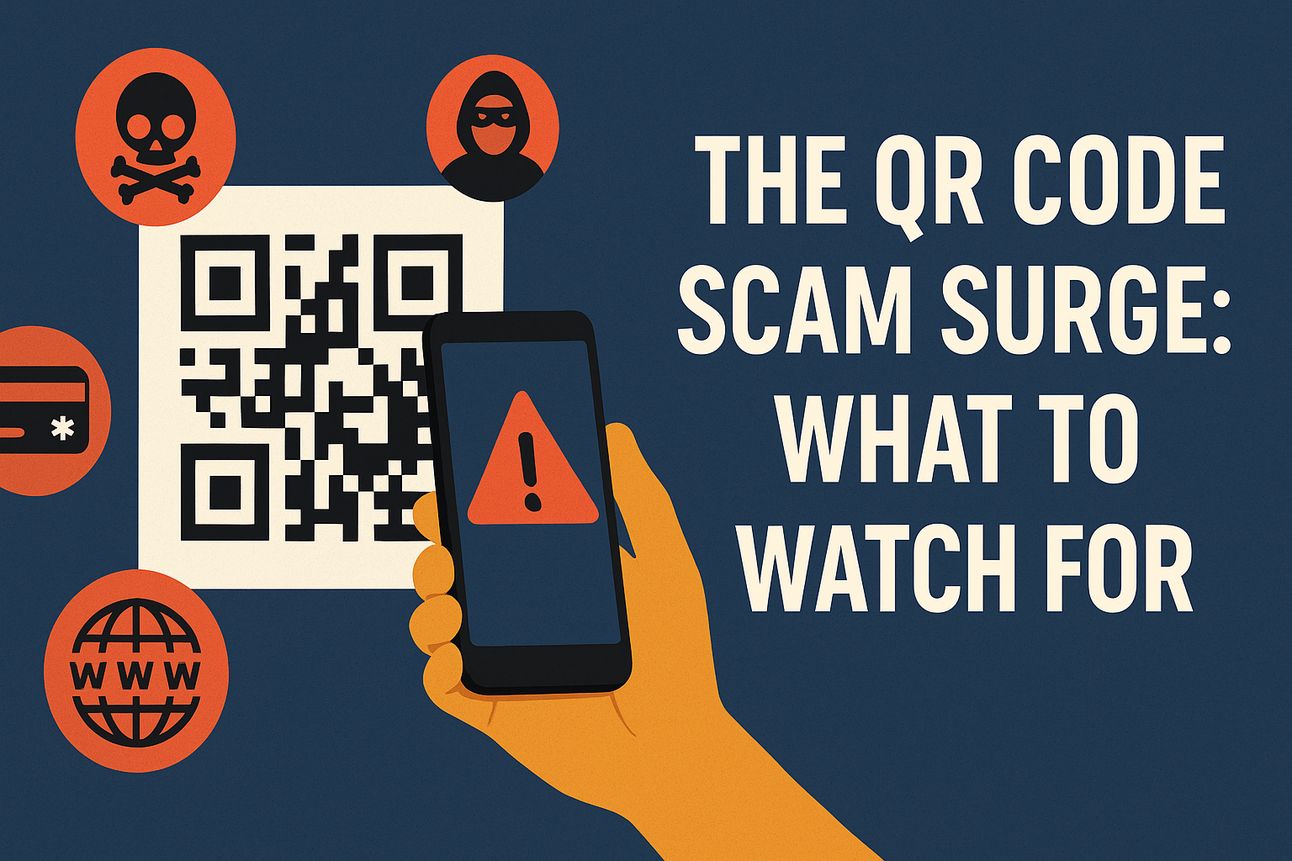- The Cyber Safety Newsletter
- Posts
- 🚨 THE QR CODE SCAM SURGE: WHAT TO WATCH FOR
🚨 THE QR CODE SCAM SURGE: WHAT TO WATCH FOR

You’ve probably scanned a QR code this week—maybe to view a menu, pay a bill, or access a parking meter. But cybercriminals are banking on that habit—and they’re using it to steal your data, hijack your devices, and drain your bank account.
In this issue, we’ll break down the rise of QR code scams: how they work, why they’re exploding right now, and what simple habits can keep you safe.
📈 Why the Surge in QR Code Scams?
QR codes exploded in popularity during the pandemic. Restaurants, retailers, and public services adopted them for convenience and hygiene. But what began as a helpful tool is now a booming target for cybercriminals.
The FBI has issued warnings, and major cities are seeing waves of scams. Fake QR codes have appeared on parking meters, flyers, and even official-looking documents. Victims are tricked into visiting malicious websites or downloading malware—all with a quick scan.
🎯 How the Scam Works
The Setup: A fraudster prints a fake QR code and sticks it over a real one—on a parking meter, restaurant table, flyer, or even your mailbox.
The Bait: You scan it, expecting a bill pay site, menu, or delivery update.
The Hook: Instead, the link goes to a phishing site asking for login info, credit card numbers, or a payment.
The Damage: In some cases, the link installs malware or spyware on your phone instantly.
🧠 Real-World Example
In Austin, TX, fake QR codes were found on over 100 parking meters. Unsuspecting drivers scanned them to pay, entered their credit card info—and handed it straight to scammers. Losses ranged from a few dollars to several hundred, with follow-on identity theft reported.
🔒 Five Ways to Stay Safe
Don’t scan blindly. Inspect QR code stickers before scanning. Is it crooked? Peeling? Covering another code? That’s a red flag.
Use your brain before your camera. Ask: does this source make sense? Would a legit vendor use a QR code here?
Preview the link. Your phone should show the URL before you open it. If it looks sketchy or unfamiliar—don’t click.
Watch for shortened URLs. Scam QR codes often link to bit.ly or tinyurl links to obscure the real domain.
Use a trusted QR code scanner app (like Norton Snap or Kaspersky) that can verify URLs before opening.
🚧 Coming Soon: QR Code Filters
Some modern phones and browsers are adding filters to flag suspicious QR-linked domains. But adoption is slow—and scams are getting faster. Until protection catches up, your own awareness is the best defense.
🧭 Final Thought
QR codes aren’t inherently dangerous—but blind trust is. A moment of caution can prevent weeks of chaos. Scan smart, and stay safe.
Want to learn more tips for personal cyber safety? Subscribe or read past issues at:
👉 https://newsletter.thecybersafety.company
Have a topic you'd like us to cover?
📬 Email me directly at [email protected]
Until next time — stay private, stay safe.
— Peter Oram
Chief Cyber Safety Officer
FOLLOW US ON SOCIAL MEDIA


